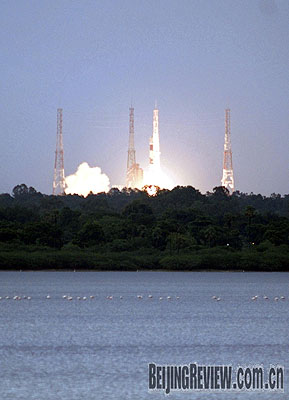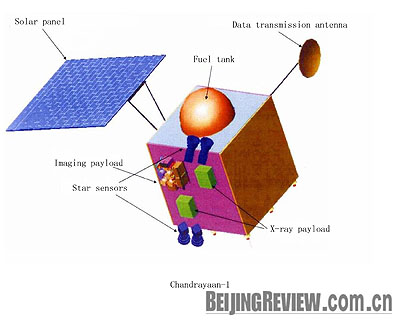|

MAIDEN MISSION: An Indian launch vehicle blasts off with the Chandrayaan-1 lunar probe in Sriharikota, south India, on October 22
Last month India launched its first lunar probe, Chandrayaan-1, which joins lunar explorers from China and Japan. The launch was a milestone in India's space program, making it the fifth country to master lunar probe technology after Russia, the United States, China and Japan. India plans to launch manned space missions by 2014. It will conduct a manned mission to the moon by 2020. The moves will help boost the country's national power.
A modified version of the Polar Satellite Launch Vehicle-XL (PSLV-XL) blasted off with Chandrayaan-1 from the Satish Dhawan Space Center in Sriharikota, southern India, at 6:22 a.m. on October 22. An official told the Indo-Asian News Agency that the health of the spacecraft was normal and that it was "doing fine" the day after its launch.
The PSLV-XL is India's most sophisticated launch vehicle. It was developed by the Indian Space Research Organization (ISRO) and is based on the PSLV. The PSLV launcher has undertaken 12 missions to date, all of which were successful except its first launch in 1993.

Chandrayaan-1 will carry out a number of orbit-raising maneuvers in the highly elliptical transfer orbit before firing its engine to propel itself into the lunar transfer trajectory. It will spend five and half days in this trajectory assessing its performance and adjusting its orbit. Then it will reduce speed to enable the gravity of the moon to pull it into a lunar orbit 1,000 km above the moon. After that, it will descend to its working orbit. The spacecraft will follow this orbit around the moon for two years to observe the minerals and the chemical and topographical features on the lunar surface. This will pave the way for India's manned mission to the moon.
|
